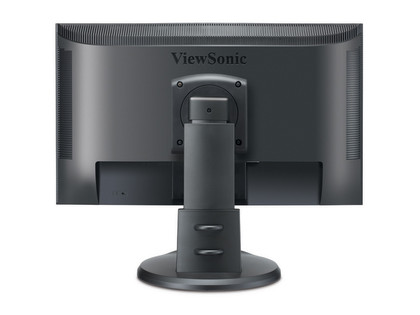Why you can trust TechRadar

So, we know the new ViewSonic VP2365-LED packs an IPS panel. But what does that actually mean in terms of specs, and what else makes this £200/$350 panel tick?
With a 24-inch screen diagonal and 1,920 x 1,080 pixel grid, the VP2365-LED ticks the same Full HD 1080p box as all those cheap TN panels. Look a little closer, however, and you'll begin to spot the differences.
For starters, the viewing angles are quoted at 178 degrees for both horizontal and vertical. That may not sound like a dramatic increase over the 170 and 160 degrees horizontal and vertical typically claimed for TN screens, but it makes an enormous difference. The 1,000:1 static contrast ratio also hints at a quality panel.
Slightly less impressive is the 6ms claimed for grey-to-grey pixel response. It's the one metric by which IPS panels can't compete with TN technology. The ViewSonic VP2365-LED's 250cd/m2 brightness isn't exactly stellar, either, especially considering that it packs an LED backlight rather than old school CCFL tech.

Another highlight is the stand and chassis. OK, it's black and bland to the point of anonymity. And there's zero tactile delight to be had from the plain, hard plastics. But the overall assembly is sturdy and stable. It also offers full adjustability, including rotate, swivel, tilt and height and VESA wall-mount compatibility.
What you don't get, however, is much in the way of peripheral technology. Unlike many cheaper screens, the ViewSonic VP2365-LED's on-screen menu isn't stuffed with fancy-sounding image processing options. It does offer full colour, gamma and temperature configurability. There's a dynamics contrast function too. But the likes of switchable pixel response modes and fancy adaptive colour processing are absent.
Frankly, that's no great loss. Most such technologies promise much but deliver very little. Nor is the superficially limited connectivity (DVI and VGA is your lot) much of a downside. Instead, ViewSonic has cooked up a no-nonsense package that majors on the things that matter - panel, backlight and chassis quality. If ViewSonic can execute on that little trio it'll have a winner on its hands, and never mind the frills.
Sign up for breaking news, reviews, opinion, top tech deals, and more.
Technology and cars. Increasingly the twain shall meet. Which is handy, because Jeremy (Twitter) is addicted to both. Long-time tech journalist, former editor of iCar magazine and incumbent car guru for T3 magazine, Jeremy reckons in-car technology is about to go thermonuclear. No, not exploding cars. That would be silly. And dangerous. But rather an explosive period of unprecedented innovation. Enjoy the ride.
